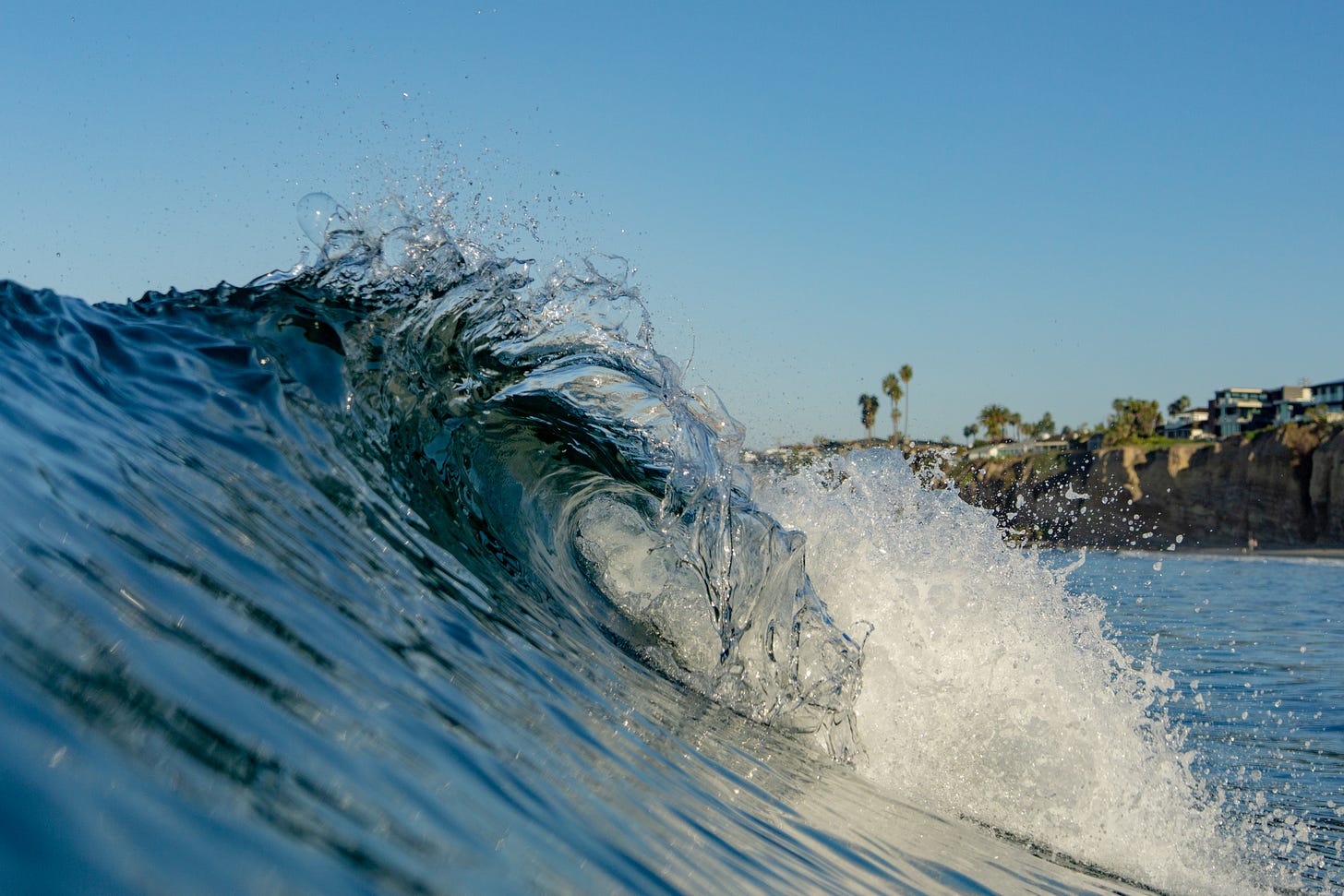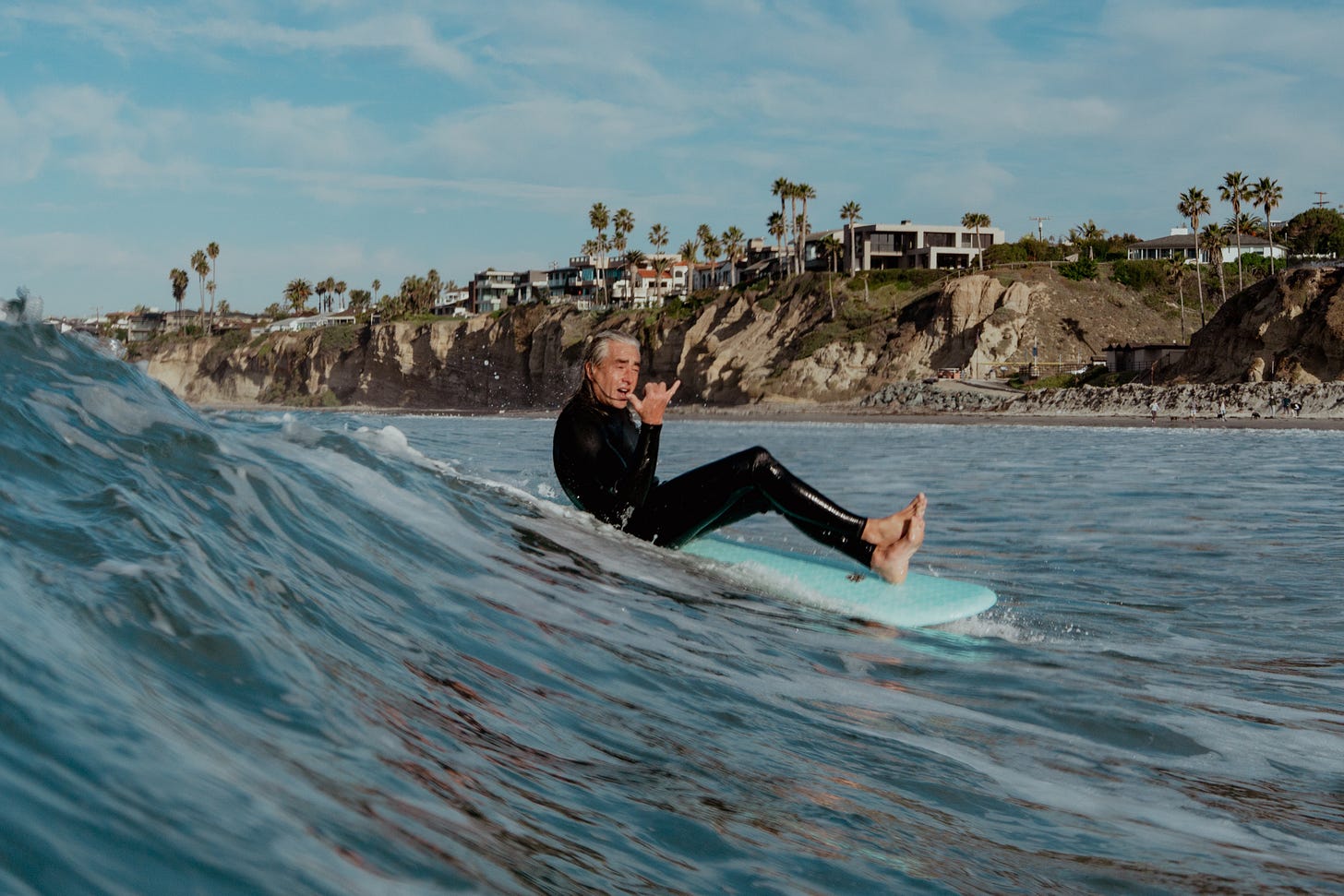What have we learned this past year and what's next?
A year ago, we started asking questions that probably pop into every surfer's head at some point. Why do some waves barrel while others just crumble? What makes that offshore wind so magical? And seriously, should you really pee on a jellyfish sting?
We've explored the science behind what makes our sessions work - from wave physics to marine biology to equipment design. We discovered that jetties create monster waves like The Wedge through wave reflection and interaction, following Snell's Law where the angle of reflection equals the angle of incidence. We learned why afternoon sessions often suck due to temperature differences between land and sea, and how the marine layer loves to ruin dawn patrol visibility.
The research took us underwater to understand rip currents and why piers create such complex flow patterns. We explored wave refraction around headlands and discovered that pelicans are accomplished wave surfers themselves, riding updrafts to save up to 70% of their energy. Biology crept in everywhere - from the bacteria that create ocean smell to the revelation that juvenile white sharks are present 97% of the time at some San Diego breaks, yet attacks remain ridiculously rare.
Medical science debunked myths while explaining realities - why peeing on jellyfish stings is actively harmful and why hot water works on stingray venom. We examined why surfers develop shoulder problems and how repetitive paddling creates muscle imbalances that can cut short our time in the water.
Equipment science proved fascinating. Our four-part fin series covered everything from basic design principles to pilot whale-inspired shapes providing optimal lift-to-drag ratios, thruster dynamics during hard turns, and quad setups. We explored surf wax chemistry, wetsuit thermal properties, and even why grooved fins might travel faster through water.
Environmental topics included sea level rise potentially creating new breaks, the 72-hour post-rain waiting period, and why "sustainable" products often aren't what they claim. Weather phenomena like the green flash and those smooth lines in the water (internal waves) got scientific explanations.
More technical topics covered wave energy calculations and the controversial subject of forecast model accuracy. We even tackled whether river waves are actually waves (they are, just standing ones in a moving reference frame).
What strikes me most after a year of digging into surf science along with my research as an oceanographer is how much we still don't know. Even in the backyard of some of the greatest oceanographers of all time, we are just grasping what is driving the coastal currents (my first paper!). The ocean remains largely unexplored, wave forecasting involves significant uncertainty, and new breaks are literally being created as we speak.
This brings me to you. What questions keep you awake between swells? What phenomena have you noticed that seem questionable? Are there topics we've covered that deserve deeper investigation, or completely new areas where science intersects with surfing? Do you prefer individual articles or series on a topic?
Maybe you've wondered about optimal board design for your local break, or why some spots handle crowds better than others. Perhaps you're curious about climate change effects on waves, new materials science, marine life behavior, or the biomechanics of specific maneuvers.
Whatever it is, send it my way. The intersection of science and surfing offers endless rabbit holes worth exploring, and the best questions often come from actually spending time in the water. Let’s start a discussion.
You can find the rest of the 52 articles in the complete archive. Here's to another year of scientific curiosity in the lineup.




Are surfers more likely to need a hip replacement on their leash leg?